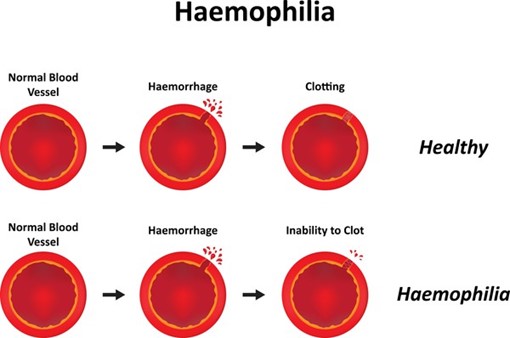The nurse is developing an activity plan for a client. The nurse should recognize that which activity plan would best conserve the client's energy without compromising physical or mental health?
Scheduling energy-intensive activities at the time of day when the client has higher energy levels.
Scheduling all activities within a small block of time to allow the client a longer, uninterrupted rest perioD.
Scheduling toilet breaks before and after any other planned activity.
Scheduling the client's hygiene activities and limiting visitors.
The Correct Answer is A
Choice A reason: Scheduling energy-intensive activities at the time of day when the client has higher energy levels is an activity plan that would best conserve the client's energy without compromising physical or mental health because it allows the client to perform tasks when they feel most capable and comfortable, as well as balance rest and activity throughout the day.
Choice B reason: Scheduling all activities within a small block of time to allow the client a longer, uninterrupted rest period is not an activity plan that would best conserve the client's energy without compromising physical or mental health because it can cause fatigue, stress, and frustration for the client, as well as reduce their mobility and function.
Choice C reason: Scheduling toilet breaks before and after any other planned activity is not an activity plan that would best conserve the client's energy without compromising physical or mental health because it can limit the client's fluid intake and output, as well as increase the risk of urinary tract infections or constipation.
Choice D reason: Scheduling the client's hygiene activities and limiting visitors is not an activity plan that would best conserve the client's energy without compromising physical or mental health because it can neglect the client's social and emotional needs, as well as isolate the client from their support system.
Nursing Test Bank
Naxlex Comprehensive Predictor Exams
Related Questions
Correct Answer is C
Explanation
Choice A reason: Mitigation is not the level of the National Response Framework that involves educating the residents about evacuation routes and emergency shelters because it is the level that focuses on reducing or eliminating risks and vulnerabilities before a disaster occurs, such as building levees or dams, enforcing zoning codes, or implementing insurance policies.
Choice B reason: Security is not the level of the National Response Framework that involves educating the residents about evacuation routes and emergency shelters because it is not a level of the framework, but rather a cross-cutting function that supports all levels by ensuring the protection of people, property, and information from threats or hazards.
Choice C reason: Preparedness is the level of the National Response Framework that involves educating the residents about evacuation routes and emergency shelters because it is the level that focuses on enhancing the readiness and capabilities of individuals, organizations, and communities to respond to and recover from a disaster, such as developing plans, conducting trainings, or providing education.
Choice D reason: Response phase is not the level of the National Response Framework that involves educating the residents about evacuation routes and emergency shelters because it is the level that focuses on delivering immediate assistance and resources to save lives, protect property, and meet basic needs during and after a disaster, such as activating emergency operations centers, deploying teams, or providing shelter.
Correct Answer is ["D"]
Explanation
Swimming is the recommended sport for a school-age child with hemophilia. Hemophilia is a bleeding disorder in which the blood lacks certain clotting factors. Engaging in contact sports or activities with a high risk of injury can increase the chances of bleeding episodes and injury for individuals with hemophilia.
Explanation:
Swimming is a low-impact sport that minimizes the risk of injury and joint stress, making it an ideal choice for children with hemophilia. It provides a cardiovascular workout without subjecting the child to excessive physical stress or the risk of trauma that could lead to bleeding. Swimming also promotes muscle strength and coordination without putting significant pressure on the joints.
Now, let's discuss why the other options are not recommended:
Basketball involves physical contact and has a higher risk of falls, collisions, and potential injuries. These factors increase the likelihood of bleeding episodes for individuals with hemophilia.
Gymnastics also carries a high risk of falls, joint stress, and potential injuries. The impact and demanding movements involved in gymnastics can pose a significant risk for children with hemophilia, leading to bleeding complications.
Soccer is a contact sport that involves running, kicking, and potential collisions with other players. The physical demands and unpredictable nature of the game increase the risk of injury and subsequent bleeding for individuals with hemophilia.
In summary, swimming is the most suitable sport fo r a school-age child with hemophilia due to its low- impact nature and minimal risk of injury. It promotes physical fitness while minimizing the likelihood of bleeding episodes and joint stress.
r a school-age child with hemophilia due to its low- impact nature and minimal risk of injury. It promotes physical fitness while minimizing the likelihood of bleeding episodes and joint stress.
Whether you are a student looking to ace your exams or a practicing nurse seeking to enhance your expertise , our nursing education contents will empower you with the confidence and competence to make a difference in the lives of patients and become a respected leader in the healthcare field.
Visit Naxlex, invest in your future and unlock endless possibilities with our unparalleled nursing education contents today
Report Wrong Answer on the Current Question
Do you disagree with the answer? If yes, what is your expected answer? Explain.
Kindly be descriptive with the issue you are facing.
